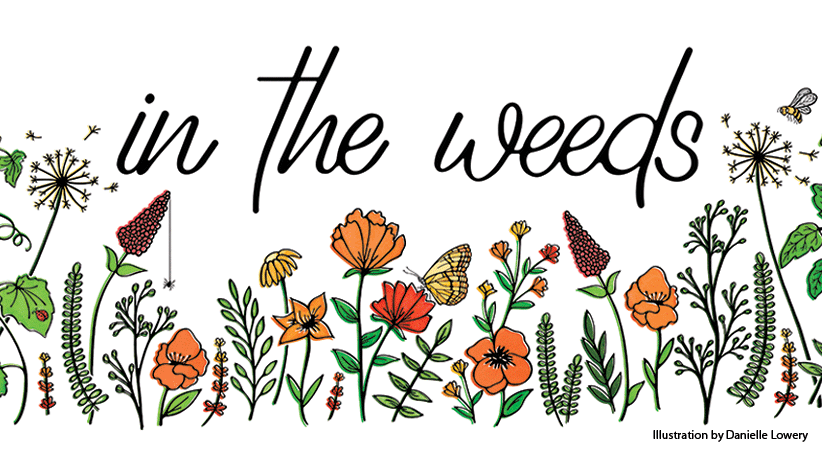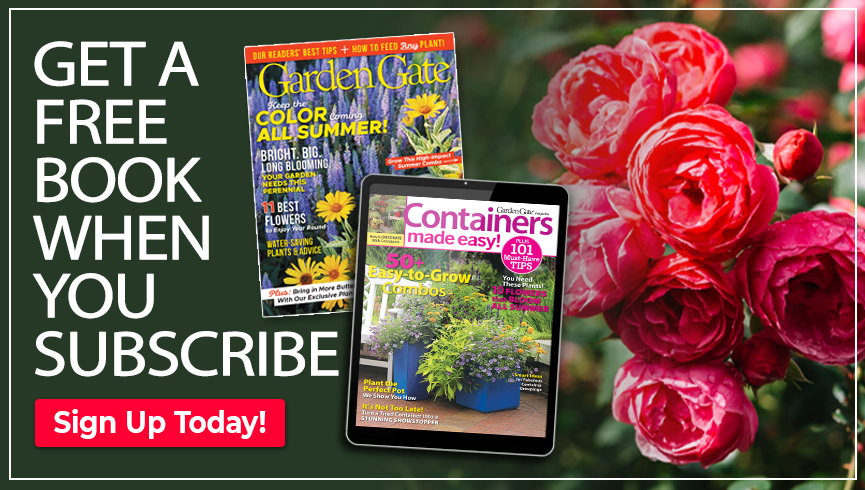
Snowdrop
Galanthus spp.
Type Bulb
Blooms: Nodding, white bells, often with emerald-green markings
Size: 4 to 9 inches tall
Light: Full sun to part shade
Soil: Moist, well-drained soil
Pests: None serious
Cold Hardiness Cold hardy in USDA zones 3 to 8
In February, while tomato and geranium seedlings are safely tucked in under the basement grow lights, snowdrop flowers are poking their little heads up in my sleeping garden. These brave blooms warm my soul, even if the outside temperatures don’t.
Once they’re established, winter-blooming snowdrops grow in compact drifts. As long as the weather stays cool, the bell-like flowers last for weeks, closing each night. They even have a sweet, honeylike fragrance, although you probably won’t catch it unless you get down on your hands and knees to take it in. If you find an older flower with a drop of what looks like dew, give it a taste. You’ll be surprised at the sweet nectar from these small beauties.

Types of snowdrop flowers
There are several different species and cultivars of snowdrops. At first glance, they’re similar — all about 6 inches tall with white to green flowers. I’ll show you some of the most commonly available ones. In England, there are lots of cultivars of snowdrops available, but only a few cultivars and hybrids are available for sale in North America. Here are a few you might find:
- Giant snowdrop (Galanthus elwesii) grows 9 inches tall, almost twice the height of its cousin!
- ‘Sam Arnott’ is prized for its large flowers.
- ‘Viridapicis’ has more green markings than its relatives.
- ‘Flore Pleno’ has unique double blooms.
Snowdrop flower bulb sources

How to grow snowdrop flowers
Snowdrops grow best in moist, well-drained soil in full sun to part shade. Buy them soon after they arrive at your local garden center in the fall. Plant snowdrop flower bulbs 3 to 4 inches deep and 2 to 3 inches apart in the fall for spring blooms.
Because of their small size, snowdrops make the most impact in groups of at least four to five bulbs. If you want a natural look, learn about naturalizing snowdrops in "How to Get More Snowdrops" below. When the flowers fade, let the leaves die back naturally so there’s food for next season’s bulbs. In the fall, scratch a slow-release bulb fertilizer into the soil at the rate recommended on the package.
You Might Also Like:
Companion Plants for Spring Bulbs
Beautiful Winter Plants
Talk & Tour: Spring Front Yard Garden Tour | Memphis, TN
Best places to site snowdrops in the garden
Since a snowdrop flowers are one of the first signs that spring is on its way, consider planting bulbs where you’ll be reminded of winter’s end each time you see their blooms. A bed by a well-worn path or a spot you can easily see from a window indoors is perfect. Culturally, a woodland setting or a moist, shaded rock garden are two places they thrive.
Snowdrops are early spring ephemerals
Snowdrop flowers thrive in cool, even cold, weather. If your snowdrops look a bit deflated after a late, hard freeze, a few hours of sunlight will do wonders to revive them. In fact, it’s bittersweet that those unusually warm, late-winter days actually cause snowdrops to fade most quickly. So, take pleasure in the last cold days of winter because it’s then that your snowdrop flowers shine.

Companion plants for snowdrop flowers
There aren’t many flowers that bloom as early as snowdrops do. But hellebores and some of the early crocuses, such as ‘Cloth of Gold’ (Crocus susianus) or ‘Snow Bunting’ (Crocus chrysanthus), make charming companions and often bloom toward the end of the snowdrops’ show. And there are always pansies (Viola spp.), which add a variety of colors to any setting.
You Might Also Like:
How to Grow Bulbs on a Budget
Winter Garden Ideas
Types of Bulb Planters
How to Get More Snowdrops

How to divide snowdrops
Snowdrops can remain undisturbed for years and will multiply by themselves. To divide a large clump, wait until the flowers have faded. Then choose a thick clump and lift a section of the bulb patch, surrounding soil and all. Carefully divide it into sections of four or five bulbs. Keep some for yourself and share a few with friends. Replant the bulbs immediately and follow with a thorough watering.
Tips for naturalizing snowdrop flower bulbs
To naturalize snowdrops, plant in fall. Choose a spot with moist soil under deciduous trees in a meadow or at the edge of a woodland. A location in a lawn with sparse grass is a good spot to naturalize bulbs, too.
Bulbs in nature spread outward, forming colonies. To replicate this effect, gently toss handfuls of bulbs onto the area you’re planting. Plant the bulbs where they fall, about 10 to a square foot. Don’t worry too much about spacing but still plant them 3 to 4 in. deep. I usually use a narrow-bladed hand trowel to slice into the soil. Then I rock it back and forth a time or two to make a small hole where I can drop in the bulb. This way I don’t have to cultivate a large area. A deep watering after planting will encourage root growth and prepare the bulbs well for their early spring bloom.
How to force snowdrop bulbs indoors
Snowdrop flower bulbs also make good candidates for forcing indoors — if you start in August, you could have blooms on your table in December!
- Fill a 6-inch container three-quarters full with potting mix and set seven to nine bulbs closely together on top of the soil. The tip of each bulb should be even with the pot’s rim.
- Add soil until the bulb tips just show above the soil’s surface.
- Water and store the pot in an unheated garage or refrigerator at 35 to 45 degrees F to provide a necessary chilling period for the bulbs that will ensure they bloom.
- Keep the soil moist, and after 15 weeks, move the pot to a well-lit location indoors.
- In a couple of weeks, you should see these little beauties poking through the soil’s surface.
- Water plants when the soil is dry to the touch. After the blooms fade, transplant them outside to enjoy in the garden next year.
You Might Also Like:
VIDEO: Tips for Forcing Flower Bulbs
Spring-Flowering Bulbs
How to Grow Hellebores
Winter Flowers for Every Region















